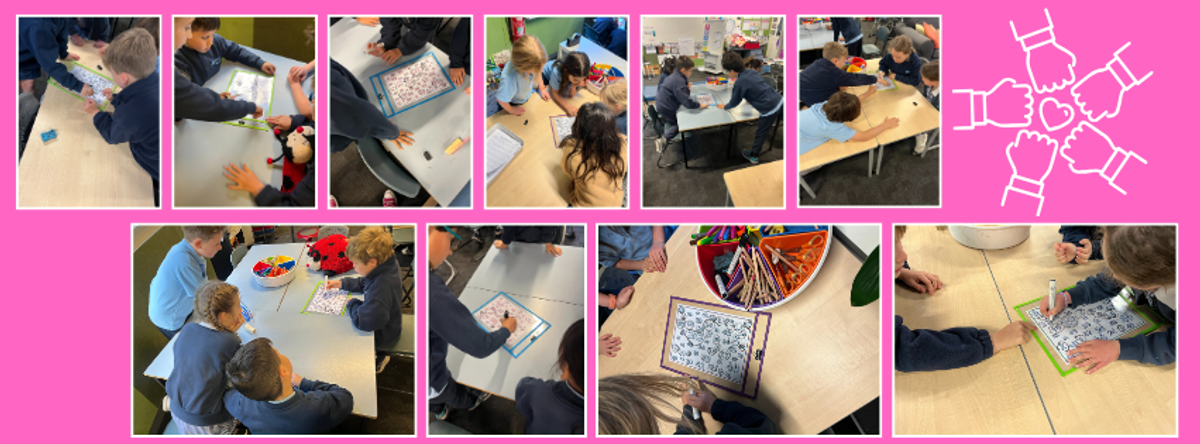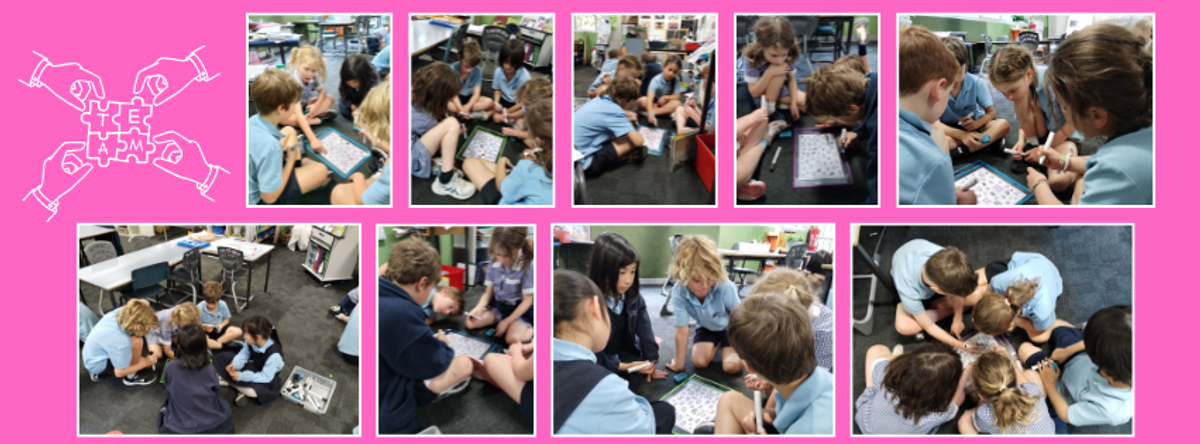Year 2
Wellbeing

Year 2
Wellbeing
To explore the benefits of cooperation with a set of team-building number race activities.
Students were randomly divided into groups of 4.
Each group was given a different-coloured number mat with the numbers 1–50 in different fonts, positions, and sizes, in a page protector.
Groups used a new number mat for each challenge.
WHOLE
To begin with, we came together to break down the meaning of our Learning Intention. We asked the students to consider what might co-operation look like, and if they could give an example. We discussed the way that could be shown in their group, during this activity.
SMALL
Challenge #1: Cross off numbers in ascending order from 1 to 50. When it isn’t your turn, you can help your teammates using words or gestures, such as pointing. Finish pose: Seated in a chair with hands on head
Challenge #2: Cross off numbers in descending order from 50 to 1. When it isn’t your turn, you can help your teammates with gestures, such as pointing, but no speaking. Finish pose: Seated on the floor with hands covering eyes
Challenge #3: Cross off all even numbers in ascending order from 2 to 50. When it isn’t your turn, you may only help your teammates using words, but no gestures. Finish pose: Standing with one foot on your chair
Challenge #4: Cross off all odd numbers in ascending order from 1 to 49. When it isn’t your turn, you may not help your teammates at all. Finish pose: Standing with hands on hips.
WHOLE
We came together again, to share our experiences:
1. Which challenge was the easiest for your group? Why?
2. Which challenge was the most difficult for your group? Why?
3. What strategies did you use to help your group be successful?
4. What would have made the challenges easier?
5. What would have made the challenges more difficult?
6. Do you think having more or less group members would be an advantage or disadvantage?
7. What did you notice about teamwork during these challenges?
8. If we tried again, what would you do differently?
9. Would removing the ‘race’ element change your approach?
10. How can you apply this activity to the concept of cooperation?
11. What lessons can you take with you from this activity into future group work?
12. Can you come up with another way we could complete the challenge?
13. What did you like about these challenges?
14. What did you find difficult during the challenges?
15. What are some ways your group cooperated with each other?




To continue the learning at home, from this experience:
Jocelyn and Steph
Year 2 Team